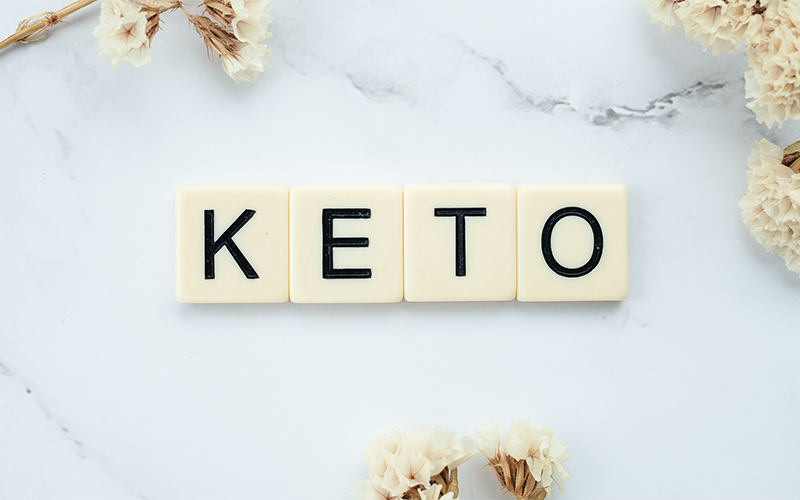The ketogenic diet is growing in popularity as a natural way to lose weight and improve health. The diet is very low in carbohydrates, high in fat, and moderate in protein. While the diet is considered safe for most people, it has been associated with some unpleasant side effects.
Keto flu, also known as carbohydrate flu, is a term coined by followers to describe the symptoms they experience when starting a diet.
This article investigates what the keto flu is, why it happens and how to alleviate its symptoms.
What is keto flu?
Keto flu is a set of symptoms that some people experience when they start a keto diet.
These symptoms are similar to the flu and are caused by your body adapting to a new diet consisting of very few carbohydrates.
Reducing your carbohydrate intake forces your body to burn ketones for energy, rather than glucose. Ketones are a byproduct of fat breakdown and when following a ketogenic diet, it becomes the primary source of fuel.
Often, when glucose is not available, fat is reserved as a secondary fuel. This switch to burning fat for energy is called ketosis. It occurs in specific situations, including starvation and fasting.
However, ketosis can also be achieved by adopting a low-carbohydrate diet.
On a ketogenic diet, carbohydrates are typically reduced to less than 50 grams per day.
This drastic reduction can be a shock to the body and can lead to withdrawal-like symptoms, similar to those experienced when quitting addictive substances such as caffeine.

What are the Side Effects of keto flu?
Moving to a low-carb diet is a major change, and it may take time for your body to adjust to this new way of eating. For some people, this transition can be particularly difficult.
Signs of keto flu may appear within the first few days of reducing carbohydrates. Symptoms can range from mild to severe and vary from person to person.
While some people may transition to a ketogenic diet without any side effects, others may experience one or more of the following symptoms.
Common keto flu symptoms:
- Nausea
- Vomiting
- Constipation
- Diarrhea
- Headache
- Irritability
- Weakness
- Muscle cramps
- Dizziness
- Poor concentration
- Stomach pains
- Muscle aches and pains
- Difficulty sleeping
- Sugar cravings
These symptoms are usually reported by those who have just started a ketogenic diet and can be distressing. Symptoms usually last about a week, although some people may experience them for a longer period of time.
While these side effects may cause some dieters to admit defeat, there are ways to reduce them. When starting a ketogenic diet, some people may experience symptoms, including diarrhea, fatigue, muscle aches, and sugar cravings.
How to get rid of keto flu
The keto flu can make you feel miserable.
Fortunately, there are ways to reduce flu-like symptoms and help your body get through the transition more easily.
Staying hydrated
Drinking enough water is necessary for optimal health and also helps reduce symptoms.
A keto diet can cause you to rapidly reduce water stores and increase the risk of dehydration.
This is because glycogen, the stored form of carbohydrates, binds to water in the body. When dietary carbohydrates are reduced, glycogen levels drop and water is expelled from the body (6 credible sources).
Staying hydrated helps relieve symptoms such as fatigue and muscle cramps.
Replacing fluids is especially important when you experience keto-flu-related diarrhea, which can lead to additional fluid loss.

Avoid strenuous exercise
And while exercise is great for staying healthy and keeping your weight under control, avoid strenuous exercise when keto flu symptoms are present.
Fatigue, muscle cramps, and stomach upset are common in the first week after a ketogenic diet, so it may be a good idea to give your body a break.
Activities like intense cycling, running, weight lifting, and strenuous workouts may have to take a back seat while your system adjusts to the new fuel source.
If you are experiencing keto flu, these types of workouts should be avoided and lighter activities like walking, yoga or a leisurely bike ride may improve symptoms.
Replacement electrolyte
Replacing dietary electrolytes may help reduce keto flu symptoms.
When following a ketogenic diet, insulin levels reduced, an important hormone that helps the body absorb glucose from the bloodstream.
When insulin levels are reduced, the kidneys release excess sodium from the body. In addition, the keto diet restricts many high-potassium sources, including fruits, legumes, and starchy vegetables.
Getting adequate amounts of these important nutrients is a great way to get through the adaptation period of the diet.
Marinating foods to taste, including potassium-rich, keto-friendly foods such as leafy greens and avocados, is a great way to ensure you maintain a healthy balance of electrolytes.
These foods are also high in magnesium, which may help reduce muscle cramps, sleep problems, and headaches.
Get enough sleep
For some people, the most common keto flu symptoms when starting a low-carb diet are irritability and fatigue.
When you are under stress and don’t get enough sleep, your body produces more cortisol, which can make keto flu symptoms worse.
Sleep is an important way to help get rid of the keto flu and will help your body recover faster and improve electrolyte absorption.
If you are having trouble sleeping, it is best to reduce your caffeine intake throughout the day. Caffeine is a stimulant and can alter your sleep schedule.
Others have found that bathing with laxative salts or lavender can help them relax enough to get a good night’s sleep.
Make sure you are consuming enough fat
Transitioning to a low-carb diet can cause you to crave foods that are restricted by the ketogenic diet, such as crackers, bread, pasta, and bagels.
However, eating enough fat, the primary fuel source for the ketogenic diet, will help reduce cravings and make you feel satisfied.
In fact, studies have shown that low-carb diets help reduce cravings for sweets and high and low-carb foods.
Those who have difficulty adapting to a ketogenic diet may have to eliminate carbohydrates gradually, rather than all at once.
Slowly reducing your carbohydrate intake while increasing the fat and protein in your diet may help make the transition smoother and reduce keto flu symptoms.
You can fight keto flu by staying hydrated, replacing electrolytes, getting enough sleep, avoiding strenuous activity, eating enough fat, and slowly reducing carbohydrates.
Why do some people get keto flu?
People adapt differently to the ketogenic diet. While some people may experience weeks of keto flu symptoms, others may adapt to the new diet without side effects.
The symptoms people experience is related to how their bodies adapt to the new fuel source.
Normally, carbohydrates provide energy for the body in the form of glucose.
When carbohydrates are heavily reduced, the body burns ketones from fat instead of glucose.
Those who typically consume a lot of carbohydrates, especially refined carbohydrates such as pasta, sugary cereals, and soda, may have a more difficult time starting a ketogenic diet.
As a result, transitioning to a high-fat, low-carb diet can be a struggle for some people, while others are able to switch easily between fuel sources with little to no keto flu symptoms.
The reasons why some people adapt more easily to a ketogenic diet than others are unknown, but genetics, electrolyte loss, dehydration, and carbohydrate extraction are thought to be the driving forces behind keto flu.
How long will it last?
The duration of keto flu varies from person to person. Some people may experience symptoms for a day or two, while others may experience symptoms for up to two weeks.
The severity of symptoms also varies. Some people are lucky enough to have almost no symptoms, while others have mild flu-like symptoms.

Conclusion
Keto flu is a set of symptoms associated with the body’s adaptation to a ketogenic diet.
Nausea, constipation, headaches, fatigue, and sugar cravings are common in some people who have adapted to a high-fat, low-carb diet.
Staying hydrated, replacing lost electrolytes, getting enough rest, and making sure you are consuming the right amount of fat and carbohydrates are ways to reduce the symptoms of keto flu.




